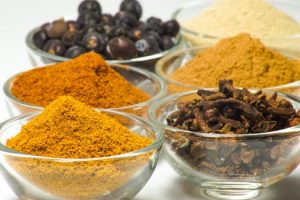Kick your turmeric up a notch with this spicy addition!

Curcumin is the active ingredient in turmeric and has been shown to help with chronic pain and inflammation. Piperine in black pepper increases the curcumin uptake by a factor of 20! You read it right, black pepper can increase your body’s turmeric uptake by twenty times.
If you have any questions on how much curcumin you should be consuming, see our other turmeric related posts below or contact us with questions:
Turmeric and knee pain
Curcumin and muscle soreness
Pain relief from a spice? What your doctor should be telling you.
For more information on Turmeric Supplements, please visit this WebMD link.
The Research
J Phys Chem A. 2016 May 26;120(20):3643-53. doi: 10.1021/acs.jpca.6b01434. Epub 2016 May 4.
Quantum Chemical and Docking Insights into Bioavailability Enhancement of Curcumin by Piperine in Pepper.
Patil VM1, Das S2, Balasubramanian K3.
Abstract
We combine quantum chemical and molecular docking techniques to provide new insights into how piperine molecule in various forms of pepper enhances bioavailability of a number of drugs including curcumin in turmeric for which it increases its bioavailability by a 20-fold. We have carried out docking studies of quantum chemically optimized piperine structure binding to curcumin, CYP3A4 in cytochrome P450, p-Glycoprotein and UDP-glucuronosyltransferase (UGT), the enzyme responsible for glucuronosylation, which increases the solubility of curcumin. All of these studies establish that piperine binds to multiple sites on the enzymes and also intercalates with curcumin forming a hydrogen bonded complex with curcumin. The conjugated network of double bonds and the presence of multiple charge centers of piperine offer optimal binding sites for piperine to bind to enzymes such as UDP-GDH, UGT, and CYP3A4. Piperine competes for curcumin’s intermolecular hydrogen bonding and its stacking propensity by hydrogen bonding with enolic proton of curcumin. This facilitates its metabolic transport, thereby increasing its bioavailability both through intercalation into curcumin layers through intermolecular hydrogen bonding, and by inhibiting enzymes that cause glucuronosylation of curcumin.











